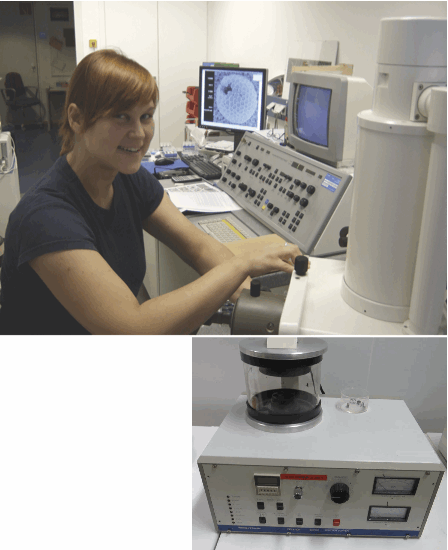|
Our working group holds a ZEISS DSM 940A Scanning Electron Microscope (SEM) that is equipped with a standard scintillator-photomultiplier device. The SEM allows to studying the surface morphology of a particle at high resolution and at large depth. Therefore, a focused electron beam strikes the sample and interactions occur inside the sample, which are detected. Our SEM has a magnification range up to 50,000x and gives very detailed images at much higher magnifications than is possible with a light microscope. In addition, our SEM is equipped with an internal measuring device that allows direct measurements of particle sizes, and is also on-line connected to a digital image system.
We basically work on coccolithophorid samples, study the assemblage compositions, measure coccoliths of various species and investigate special morphological details. In addition, we use the SEM to study outer test structure of planktic foraminifers as well as other macro- and micro-sized objects.
Samples have to be prepared carefully to withstand the vacuum inside the microscope. In addition, the samples must be dryand coated with some material to make them electrically conducting. Therefore, a Sputter Coaters is used to provide an electrically conductive thin film (<10 nm) of gold or gold / palladium representative of the surface topography of the particles to be viewed. We have the capability to mount and coat a wide range of samples. For this instance, we hold a POLARON SC7640 sputter coater, which can operate manual as well as automatic and allows us to routinely achieve fine grain coatings on our samples. A routine cycle time for sputter coating coccolithophorid SEM samples with a typical conductive coating of gold or gold / palladium will be within six minutes. | | 
| |
